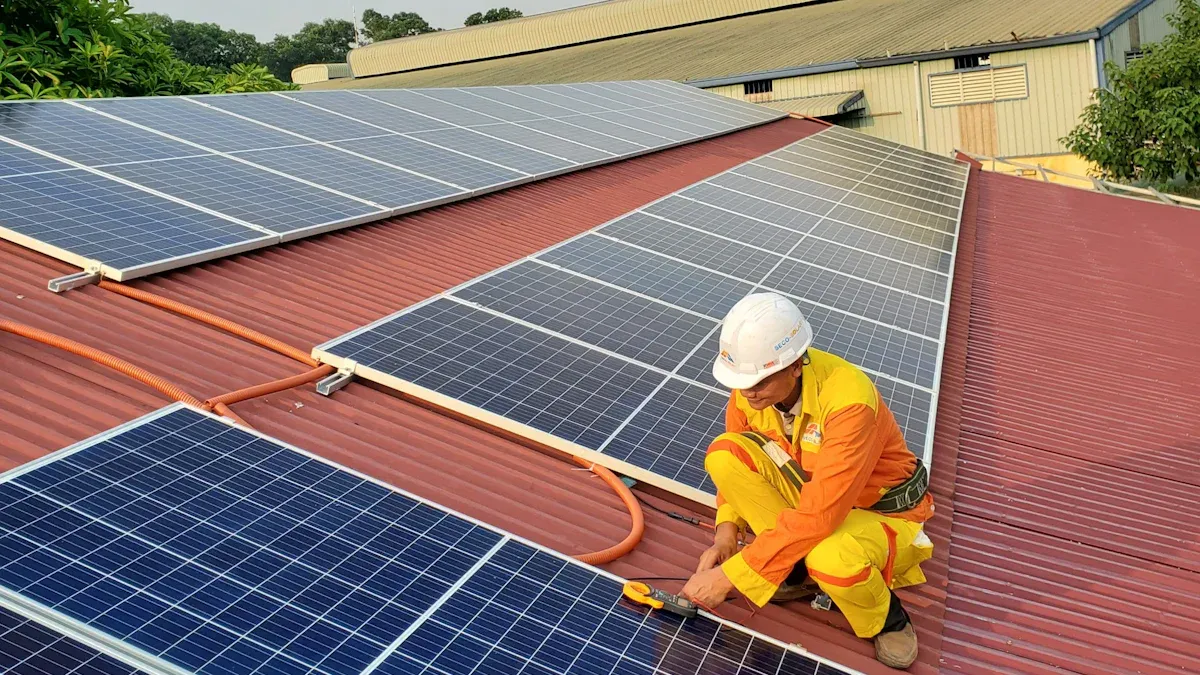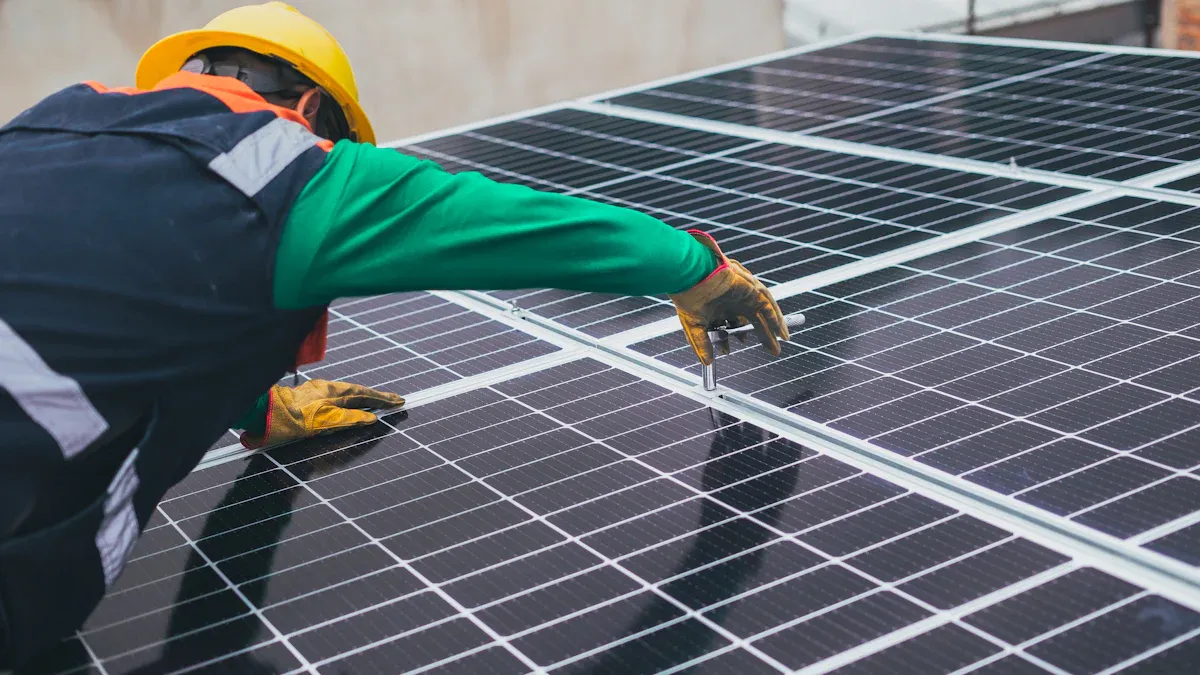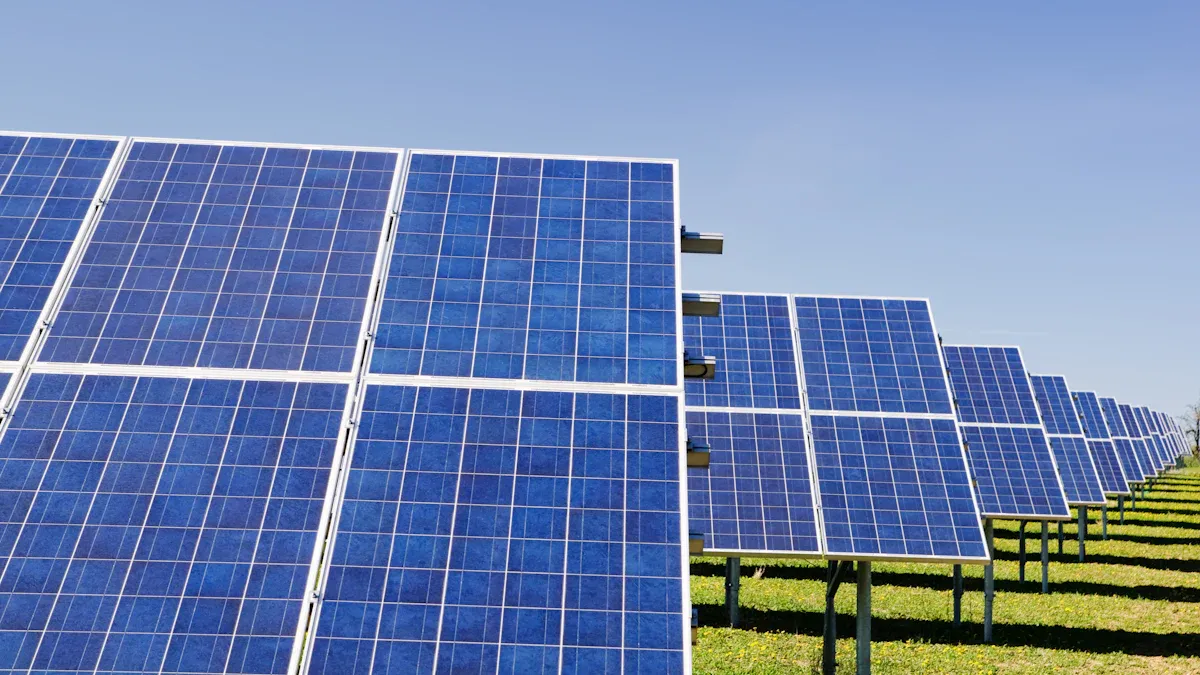
In solar panel manufacturing, tool wear presents constant challenges. SIC Coating provides an effective solution by greatly enhancing tool lifespan. Its cutting-edge properties, applied through CVD coating, withstand extreme conditions. This not only lowers maintenance requirements but also reduces costs and boosts production efficiency. By utilizing CVD SIC Coating, you further promote sustainability by reducing material waste.
Key Takeaways
- SIC Coating makes tools last much longer, up to three times more than tools without it.
- Using SIC Coating lowers repair costs by reducing damage, so tools need fewer fixes or replacements.
- SIC Coating helps the environment by cutting down waste and using fewer strong cleaning chemicals.
Overview of SIC Coating
What is SIC Coating?
SIC Coating, short for silicon carbide coating, is a protective layer applied to tools and equipment. It is created using advanced chemical vapor deposition (CVD) techniques. This coating forms a hard, durable surface that resists wear and damage. You’ll often find it used in industries where tools face extreme conditions, such as high temperatures or abrasive materials. By adding this layer, manufacturers can significantly extend the lifespan of their equipment.
Key Properties of SIC Coating
SIC Coating stands out because of its unique properties. It offers exceptional hardness, making it resistant to scratches and wear. Its thermal stability allows it to perform well under high temperatures without degrading. Additionally, it resists chemical corrosion, which is crucial in environments where tools come into contact with harsh substances. These properties make SIC Coating a reliable choice for demanding applications.
Tip: Tools coated with SIC Coating require less frequent maintenance, saving you time and money.
Industrial Applications of SIC Coating
You’ll see SIC Coating used in a variety of industries. In solar panel manufacturing, it protects tools from wear caused by repetitive processes. In aerospace, it shields components from extreme heat and friction. Semiconductor production also benefits from its chemical resistance. These applications highlight how SIC Coating improves efficiency and reduces costs across different sectors.
Challenges in Solar Panel Manufacturing
Tool Wear and Tear
In solar panel manufacturing, tools face constant stress. Repetitive processes, abrasive materials, and high temperatures wear down equipment quickly. This wear reduces the precision of your tools, leading to defects in production. Over time, the damage worsens, making tools less effective and increasing the risk of breakdowns.
Note: Tool wear doesn’t just affect performance—it also impacts the quality of the solar panels you produce.
Maintenance and Downtime Issues
Frequent maintenance becomes necessary when tools wear out. You spend valuable time inspecting, repairing, or replacing equipment. This downtime disrupts your production schedule, delaying output and reducing efficiency. Even minor interruptions can create bottlenecks in your manufacturing process.
- Common maintenance challenges include:
- Identifying worn-out tools before they fail.
- Scheduling repairs without halting production.
- Managing spare parts inventory.
When downtime increases, your ability to meet deadlines decreases. This affects customer satisfaction and your reputation in the market.
Financial Impact of Tool Replacement
Replacing worn-out tools is expensive. You not only pay for new equipment but also lose money during downtime. The cost of frequent replacements adds up, straining your budget. If your tools fail unexpectedly, emergency replacements can cost even more.
Tip: Investing in durable solutions, like SIC Coating, helps you reduce these expenses over time.
By addressing these challenges, you can improve your manufacturing process and save money. Durable tools are key to maintaining efficiency and profitability.
How SIC Coating Solves Manufacturing Challenges

Enhanced Durability and Wear Resistance
SIC Coating significantly improves the durability of your manufacturing tools. Its exceptional hardness protects tools from scratches, abrasions, and general wear. This means your equipment can handle repetitive tasks without losing precision or efficiency. For example, in solar panel manufacturing, tools often face abrasive materials that cause rapid degradation. By applying SIC Coating, you create a protective barrier that extends the lifespan of these tools.
You also benefit from enhanced wear resistance. Tools coated with SIC Coating maintain their structural integrity even under high-stress conditions. This reduces the likelihood of unexpected failures, ensuring smoother production processes.
Did you know? Tools with SIC Coating last up to three times longer than uncoated tools in demanding environments.
Thermal and Chemical Stability
SIC Coating offers outstanding thermal stability, making it ideal for high-temperature applications. In solar panel manufacturing, tools often operate under extreme heat. Without proper protection, this heat can weaken or deform your equipment. SIC Coating prevents this by maintaining its strength and performance even at elevated temperatures.
Its chemical stability is equally impressive. Manufacturing processes often expose tools to corrosive substances. Over time, these chemicals can erode unprotected surfaces, leading to costly replacements. SIC Coating resists chemical corrosion, ensuring your tools remain functional and reliable.
Tip: Using SIC Coating reduces the risk of chemical damage, saving you money on repairs and replacements.
Reduced Maintenance Costs
Frequent maintenance disrupts your workflow and increases operational costs. SIC Coating minimizes these interruptions by reducing the wear and tear on your tools. With enhanced durability and resistance, your equipment requires less frequent inspections and repairs.
You also save on replacement costs. Tools with SIC Coating last longer, meaning you spend less on purchasing new equipment. This not only lowers your expenses but also improves your overall productivity.
- Key benefits of reduced maintenance costs include:
- Fewer production delays.
- Lower labor costs for repairs.
- Increased tool availability for continuous operations.
By investing in SIC Coating, you create a more efficient and cost-effective manufacturing process.
Case Study: SIC Coating in Action

Background of the Case Study
A leading solar panel manufacturer faced significant challenges with tool wear and tear. Their production tools frequently degraded due to exposure to abrasive materials and high temperatures. This led to frequent maintenance, unexpected downtime, and increased costs. The company sought a solution to improve tool durability and reduce operational disruptions.
After researching various options, they decided to implement SIC Coating on their manufacturing tools. This decision was based on the coating’s proven ability to enhance durability and resist extreme conditions. The company aimed to evaluate how this advanced coating could impact tool lifespan, maintenance schedules, and overall production efficiency.
Tool Lifespan Before and After SIC Coating
Before applying SIC Coating, the tools required replacement every three months on average. Abrasive materials and high heat caused rapid wear, reducing their effectiveness over time. This frequent replacement cycle disrupted production and increased costs.
After applying SIC Coating, the tools demonstrated remarkable improvement. Their lifespan extended to nine months, three times longer than before. The coating’s hardness and resistance to wear allowed the tools to maintain their performance even under harsh conditions. You could see a noticeable reduction in tool degradation, which directly impacted production efficiency.
Example: A cutting tool used in the manufacturing process previously showed signs of wear after 500 hours of use. With SIC Coating, the same tool lasted over 1,500 hours without significant wear.
Quantifiable Benefits for Manufacturers
The implementation of SIC Coating delivered measurable benefits for the manufacturer. Here are some key outcomes:
- Cost Savings: The extended tool lifespan reduced the frequency of replacements. This saved the company thousands of dollars annually on new tools.
- Increased Efficiency: With fewer maintenance interruptions, production schedules became more consistent. This allowed the company to meet deadlines more reliably.
- Reduced Downtime: The tools required less frequent repairs, minimizing production delays. This improved overall operational efficiency.
- Improved Product Quality: Tools maintained their precision for longer periods, resulting in fewer defects in the final solar panels.
Tip: By investing in SIC Coating, you can achieve similar benefits, including cost savings and improved production reliability.
These results highlight the transformative impact of SIC Coating on solar panel manufacturing. It not only addresses common challenges but also creates opportunities for long-term growth and sustainability.
Broader Implications of SIC Coating
Cost Savings in Manufacturing
SIC Coating helps you save money by reducing tool replacement and maintenance costs. Tools coated with this material last longer, which means you spend less on frequent replacements. This durability also minimizes unexpected breakdowns, saving you from costly emergency repairs. Over time, these savings add up, allowing you to allocate your budget to other areas of your business.
Tip: Investing in durable solutions like SIC Coating can significantly lower your operational expenses.
Efficiency Gains in Solar Panel Production
When tools last longer and require less maintenance, your production process becomes more efficient. SIC Coating ensures that your equipment operates at peak performance for extended periods. This consistency reduces downtime and keeps your production line running smoothly. As a result, you can meet deadlines more reliably and increase your output.
Efficient production also improves product quality. Tools coated with SIC Coating maintain their precision, reducing defects in the solar panels you produce. This leads to higher customer satisfaction and fewer returns.
Environmental Sustainability Benefits
SIC Coating contributes to sustainability by extending the lifespan of your tools. Longer-lasting tools mean less waste, as fewer materials end up in landfills. Additionally, reduced maintenance and replacements lower the energy and resources needed for manufacturing new tools.
By adopting SIC Coating, you also support cleaner production processes. Its resistance to chemical corrosion reduces the need for harsh cleaning agents, which can harm the environment. These benefits align with the growing demand for eco-friendly manufacturing practices.
Did you know? Sustainable practices not only benefit the planet but also enhance your brand’s reputation.
SIC coating transforms your manufacturing process by extending tool lifespan and enhancing performance. You save money with fewer replacements, improve efficiency with reduced downtime, and contribute to sustainability by minimizing waste.
Take Action: Adopt SIC coating today to boost your production quality and align with eco-friendly practices.
FAQ
What makes SIC Coating different from other coatings?
SIC Coating offers unmatched hardness, thermal stability, and chemical resistance. These properties make it ideal for tools exposed to extreme conditions in solar panel manufacturing.
How does SIC Coating reduce maintenance costs?
SIC Coating extends tool lifespan by resisting wear and corrosion. You spend less on replacements and repairs, which lowers overall maintenance expenses.
Is SIC Coating environmentally friendly?
Yes! SIC Coating reduces waste by extending tool life. It also minimizes the need for harsh chemicals, supporting eco-friendly manufacturing practices.


